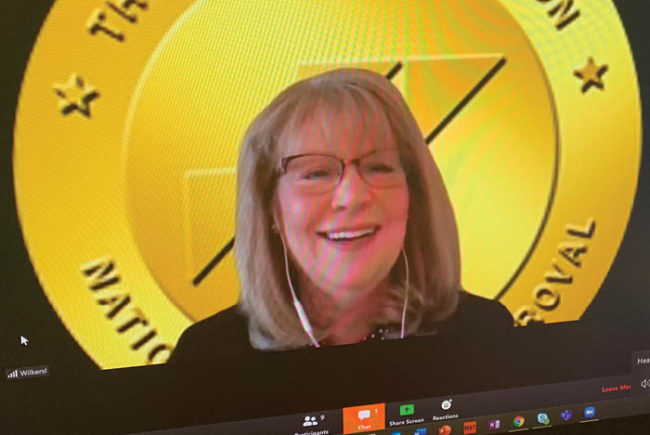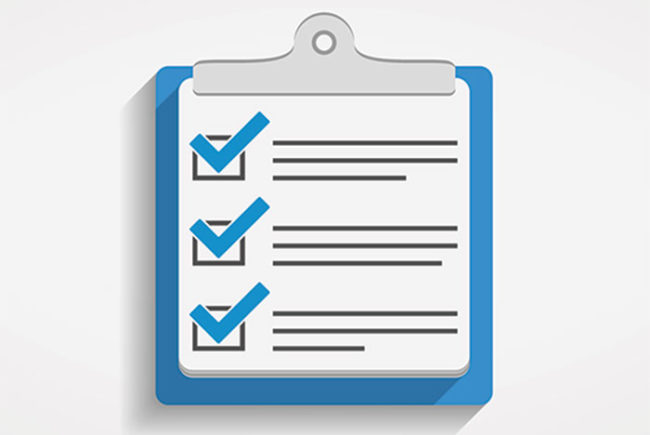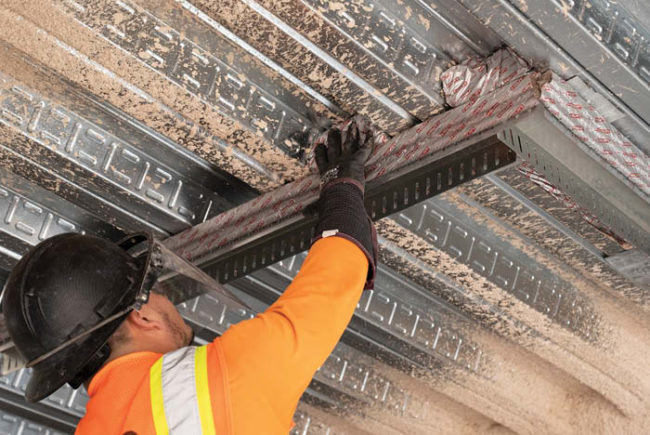
The COVID-19 pandemic has spurred health care organizations to rapidly adopt virtual inspections and their associated technologies.
Image from Getty Images
For decades, hospitals and other health care organizations have come to expect up-close and in-person scrutiny from inspectors and surveyors who make on-site visits.
Then the coronavirus happened, bringing crucial social distancing rules and special precautions. Suddenly, confirming compliance with codes and standards became a lower priority as facilities scrambled to keep occupants safe and manage patient surges.
Fortunately, this is an age when innovative technology can make the previously difficult or impossible exceedingly possible. Case in point: remote virtual inspections (RVIs) and surveys (see sidebar on page 22) that can be performed with greater efficiency and success thanks to the accessibility of robust and progressively intelligent hardware (e.g., smartphones, laptops, tablets and drones) and software (e.g., live stream video platforms like Zoom, Google Meet, FaceTime, Microsoft Teams and Skype).
These capabilities have made a big difference, especially for facilities pursuing new construction, remodeling, change of use, or changes to the physical environment that need to pass muster with National Fire Protection Association (NFPA) and International Code Council (ICC) codes and requirements.
A year of change
“Virtual-type inspections have been proposed for quite some time, particularly inspections of buildings and the physical environment. But it’s the COVID-19 pandemic that has spurred health care organizations to rapidly adopt this approach and the associated technologies,” says Chad Beebe, AIA, CHFM, CFPS, CBO, FASHE, deputy executive director of the American Hospital Association’s American Society for Health Care Engineering.
Resources
RVIs have actually been used globally for many years, although they were primarily restricted to residential inspections, according to William Koffel, PE, FSFPE, SASHE, president of Columbia, Md.-based Koffel Associates, a fire protection engineering and life safety design and consulting firm.
“There’s been a growing conversation about virtual inspections over the last five years because of emergent technology that’s made it a lot easier for folks to communicate. But building and engineering departments have been slow to adopt RVIs until recently,” says Karl Fippinger, vice president of Fire and Disaster Mitigation in the Government Relations Department for Washington, D.C.-headquartered ICC.
Indeed, many authorities having jurisdiction (AHJs) were hesitant to authorize RVIs before 2020; but a growing number of them have been allowing RVIs either on a temporary or permanent basis since the beginning of March 2020.
“For the most part, the health care field has been able to continue with important inspection, testing and maintenance efforts during the pandemic, supported in part by the implementation of tools and processes that enable these things to happen remotely and virtually,” says Jonathan Hart, PE, SASHE, CHC, technical lead for the NFPA, Quincy, Mass.
Perks of the process
One AHJ that has embraced RVIs is the Washington State Department of Health (WSDH) in Olympia, Wash.
“Many health care construction projects in Washington state have benefited from remote construction inspections,” says John Williams, executive director for construction review services at WSDH. “In fact, our department has been doing virtual construction inspections via live video for several years, including at hospitals. As COVID-19 has reduced our ability to travel and engage on-site, we’ve found this to be one of the useful tools for validating completion and compliance.”

Timothy Mikloiche, chief building official and supervisor of inspections for the building inspection division of West Hartford, Conn., remotely checks an electrical contractor’s work during a remodeling project.
Image courtesy of West Hartford Building Inspection Division
Beebe says the advantages of RVIs are obvious.
“AHJs, especially local building officials, are having to get by with fewer staff. Plus, it takes a lot of time to travel to sites across a city, county or region — especially in rural areas,” Beebe says. “That’s why there’s so much value in doing many of these inspections remotely. And there’s ample technology available that can make the job so much easier.”
Other benefits include better documentation of the inspection (if required or desired), a possibly improved examination with the help of resources like drones that can view items from above ground level, quick and clear communication of project issues, increased observation and partnership, and a lowered carbon footprint.
“RVIs allow hospital administrators and code officials to leverage improved technologies that can become tools in their toolbox,” Fippinger says. “It has particular application in larger buildings that require cumbersome exterior inspections. Before, you’d have to go rent a lift to inspect a wall or roof; today, those things can and will start to be inspected via video camera or drone by a hospital staffer or a hired third-party contractor.”
Some, like Koffel, even believe that nearly every type of inspection required for a health care organization can eventually be performed using RVIs.
“For example, reviewing the documentation for periodic inspection, test and maintenance activities can be performed as effectively using virtual technology as it can be in-person,” Koffel says. “Where inspections historically required someone to walk through areas of a facility, an AHJ can now use a live stream or, if necessary and allowed, recorded video to guide them through those areas.”
Difficulties and drawbacks
Of course, inspecting from a distance is not without its limitations. “Seeing through a camera, not being able to turn your head and not getting an on-site sense of the space can be a challenge when you’re orienting yourself in a building,” Williams says.
Other complications include:
- Compromised Wi-Fi or cell signals, especially on construction sites and in certain building shells, that result in poor or interrupted video and the inability to communicate during a live videoconference.
- Poor lighting that fails to properly illuminate an area of inspection.
- Always-present health care privacy issues. “End users must be carefully trained to prevent patients from being filmed and sensitive to the perception of a person holding a camera in these spaces,” Williams says.
- Motion sickness caused by watching shaky video made by handheld devices.

Fire system piping being photographed on a tablet in a building stairwell.
Image courtesy of the National Fire Protection Association
An even bigger challenge is whether the code official or AHJ will allow the use of RVIs and, if they do, what their specific limitations will be, Koffel says.
“Approval by the regulatory authority is essential,” Koffel says. “While it is the responsibility of the facility to comply with applicable code requirements, most AHJs have a responsibility to enforce them. If the AHJ does not believe that code enforcement can be effective using an RVI procedure, don’t expect that they will allow an RVI process.”
Also, careful and thorough preplanning is required. For instance, some jurisdictions won’t permit the use of a particular videoconference platform due to information technology department restrictions. Or they may require preapproval of a script the organization needs to submit that outlines what will be recorded if the inspection won’t be live.
“Many AHJs may prefer less complicated inspections until they become more comfortable with the procedures and the outcome,” Koffel says. “Some may require an independent third party to be present during the RVI. Others may have a quality assurance program to randomly evaluate if the RVI procedure is at least as effective as an in-person inspection would have been.”
For these and other reasons, there has been a lot of skepticism and worry about RVIs.
“After all, professionals conducting inspections are used to going out in the field and interacting with the physical environment on-site,” Beebe says. “However, the way we can overcome these doubts and concerns is to develop standard processes so that everyone involved can be comfortable.”
Developing best practices
While there are currently no official RVI standards for health care organizations to follow, the NFPA is developing NFPA 915, Standard on Remote Inspections, which will be submitted for public review this year and possibly available for public input in 2021.

A contractor on a video cellphone call is guided by an inspector who is observing the door leaf and frame for required fire rating label.
Image courtesy of Jim Muir, chief building official, Clark County Washington
“NFPA 915 currently addresses steps involved within the remote inspection process as well as the use of technology, formats and the submission of content,” says Kevin Carr, CDSM, CEM, LEED AP, NFPA’s senior fire protection specialist, who recommends visiting nfpa.org/remoteinspections for the latest NFPA 915 news and to access an RVI infographic, fact sheet, white paper and other related resources.
In the interim, the NFPA recently published five tips to help organizations establish programs:
- Develop policies for RVIs and share with key stakeholders and the public.
- Communicate the nature of RVIs to ensure the health and safety of all involved.
- Select live video tools to safely and securely perform RVIs
- Determine the type, time, location and people required for the inspection.
- Communicate RVI results or items for follow-up in a timely manner.
The ICC, meanwhile, has published recommended practices intended to prepare organizations for the process related to a construction project, including ensuring that:
- The job site is safe at all times for the individual using the RVI device (e.g., smartphone, tablet, drone or other device).
- The device is fully charged and has a suitably charged additional power supply.
- A noise-canceling headset is used, if possible.
- The job site has high-speed Wi-Fi connectivity or minimum 4G cellular service with a strong signal.
- Necessary tools are readily available, such as a flashlight, tape measure, level, stepladder, ground fault circuit interrupter and others.
- Approved plans, permit card and other necessary construction documents are available on-site.
- Good lighting is available and unnecessary objects are cleared from the area.
- All features applicable to the inspection are visible and captured at the time of the RVI.
- If the inspector believes the RVI process isn’t allowing them to properly assess compliance, they may require a future site inspection be done.
- If the job site lacks Wi-Fi or cell service, the inspector may allow the contractor to provide, at a later time, recorded video and/or photographic documentation of the items to be inspected for review by the inspector.
- The on-site inspection may be conducted by an approved third-party inspection agency or the AHJ’s inspection staff.
The most important thing to remember is that RVIs need to be preapproved by the AHJ, the experts agree. Carr notes that AHJs are often building and fire officials, but they can also be organizations such as the Centers for Medicare & Medicaid Services, health care accreditation organizations and possibly insurance providers.
“For planned inspections, such as those that will grant you a certificate of occupancy or permission to proceed with activity, call the AHJ several weeks before you need the inspection,” Williams says. “For unplanned inspections, reach out to the AHJ performing the review and ask if RVIs are acceptable or would be employed.”
When it comes to choosing the right staffer to use the device and conduct the RVI on-site, Fippinger recommends selecting an on-site facilities manager, fire prevention manager or hospital administrator — “someone knowledgeable enough to show the inspector or AHJ what they need to see,” he says.
Difficult to predict
It’s difficult to predict how and to what extent remote inspections and surveys will be used in the months and years ahead, especially after the coronavirus subsides. But one thing the experts can agree on: RVIs are here to stay, at least in some form.
“Now that many organizations have been forced to adopt remote inspections and surveys, I don’t see why they wouldn’t want to continue this practice after the pandemic ends unless they’ve determined that it’s ineffective,” Beebe says.
Hart seconds that sentiment.
“Based on the trends we were seeing before COVID-19 with several jurisdictions beginning to utilize it, many more implementing it during these times of social distancing and public health measures, and the prospect of a standardized approach coming out in the form of NFPA 915 in the years to come, it is hard to imagine remote inspections going away,” Hart says.
“How quickly we see this approach become widely adopted will likely vary per jurisdiction and may also take more time to gain traction in certain occupancy types,” Hart adds.
But proponents should expect some pushback, too.
“Relying on RVIs as a long-term strategy will be a significant paradigm shift for many,” Koffel says. “Some will be defensive for fear that it will affect their job security. Like other technological advancements, it may not cost anyone their job, but it may impact how they perform their tasks.”
Efficient and effective
Yet these fears and doubts don’t change the fundamental truth that has been learned thus far about RVIs.
“Ultimately, remote inspections enable all of us to be more efficient and more effective,” Koffel says.
Erik J. Martin is a freelance writer based in Oak Lawn, Ill.






